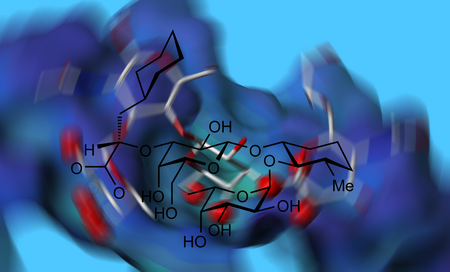Protein-Carbohydrate Interactions
Nature uses posttranslational modifications to orchestrate a diversity of complex biological functions such as cell-cell recognition or signal transduction. Among these modifications, glycosylations represent the perhaps most colorful and certainly the most diverse repertoire of distinct structures. The multitude of different glycostructures found in organisms from bacteria to man is far from being completely analyzed or understood. It is clear, however, that glycoproteins are key players in biological recognition events. Some examples for biological processes where protein-carbohydrate interactions play a fundamental role are:
- Viral and bacterial infections
- Cell-cell recognition and cell development
- Cancer and metastasis
- Development of Alzheimer's disease
- Diabetes type II
Our research focuses on the application of NMR spectroscopic techniques in conjunction with other biophysical methods such as surface plasmon resonance and molecular modeling for the analysis of protein-carbohydrate interactions at atomic resolution. Data from these investigations help to understand the nature of protein-carbohydrate interactions, and may enable us to modulate the biological function associated with the particular interaction. This is of importance for instance for the entry of viruses into host cells, and some of the projects target glycostructures that are associated with such viral infection processes. In that context we also study other viral proteins that are not glycosylated. A unifying theme of all of these topics is the NMR investigation of glycosyltransferases since these enzymes are the key to understand the variety of glycostructures in nature.


